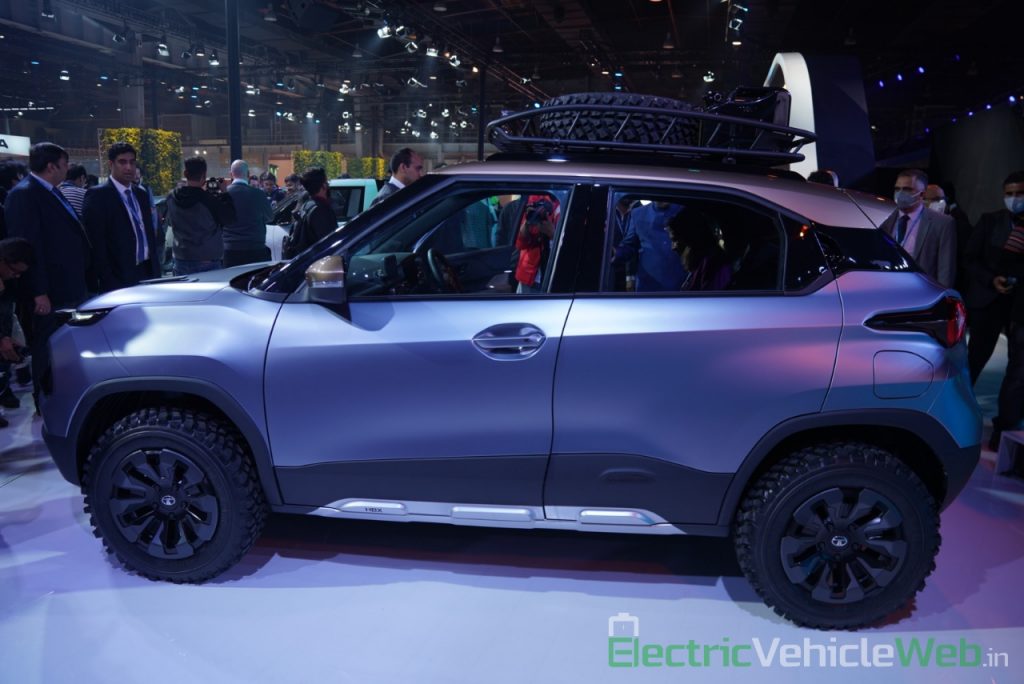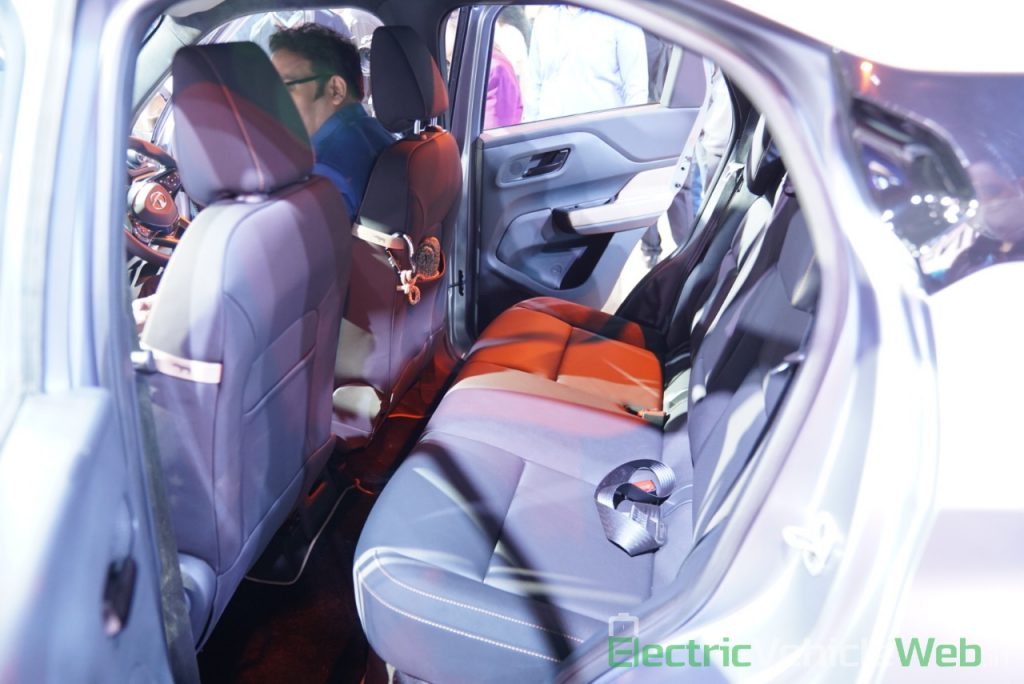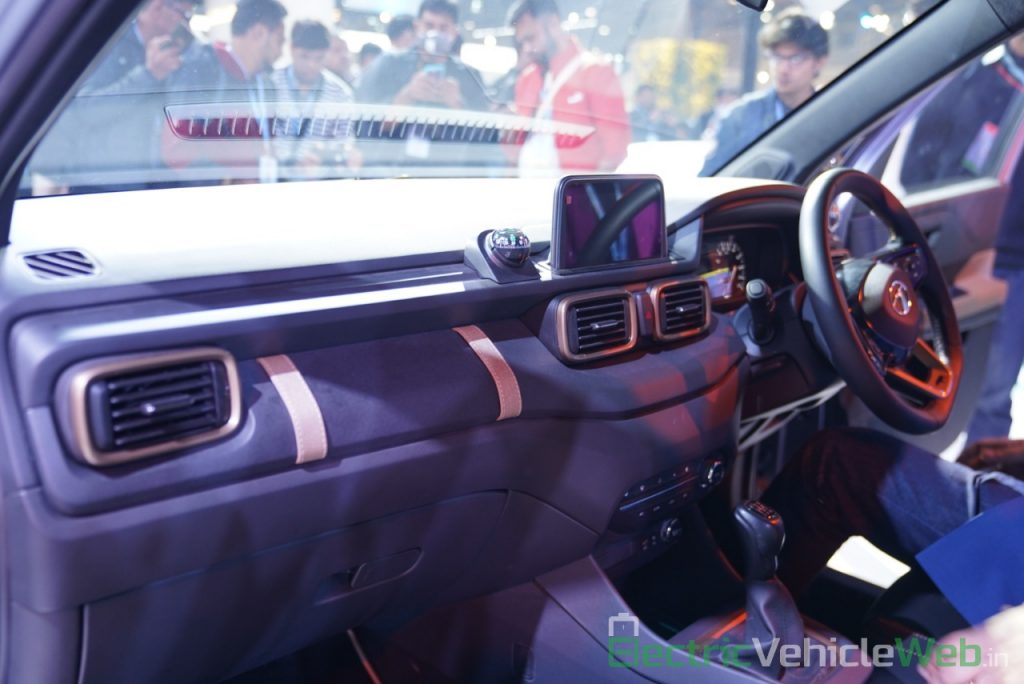ElectricVehicleWeb brings you an exclusive render of the electric version of the Tata’s micro SUV that is known today as the Tata HBX. The HBX will carry as much as 95% of the design contents of the concept into production which was showcased at the Auto Expo 2020 featuring the next interpretation of Tata’s Impact 2.0 design language.
The DRLs and headlamps are inspired by the Harrier and the front bumper captures details what test prototypes show including a traditional intake (instead of large bumper armour) and extra foglamps at the outer edges. The bumper gets the tri-arrow pattern with blue accents, like the Nexon EV. The HBX render has an alloy wheel design, C-pillar design and the Signature Teal Blue exterior colour inspired by the Nexon electric. Black body cladding is expected around the lower part of the body as reflected in our render for a rugged and go-anywhere appearance.

Prior to the COVID-19 shutdown, Tata Motors was planning four electric cars in the next two years which includes 2 SUVs and the Tata HBX electric is the first of them. It is an obvious conclusion to draw as the company does not have other SUVs nearing the end of the development stage.
Tata showcased the HBX concept at the Auto Expo 2020 in its near-production form with a petrol engine. We forecast Tata Motors to be launching the HBX by early 2021 with a petrol engine and the electric version is expected in late-2021. The HBX, codenamed ‘Hornbill’ is the second model to be built on Tata’s ALFA platform after Altroz and upon launch, it (petrol variant) will be competing with the Maruti Ignis, Ford Freestyle, Mahindra KUV100 and the upcoming Hyundai AX crossover. PSA Group is also working on an entry-level crossover for emerging markets with electric drive option.
Expect a circa Rs. 10 lakh price, long-range & connected car tech
A media report earlier said that Tata Motors is looking at an aggressive price for the electric urban crossover and it could be launched at around the Rs 10 lakh mark.
We expect conditions to change quite a bit by the time the HBX Electric is ready to launch. Firstly the range and the performance of Tata’s proprietary Ziptron electric powertrain would have seen improvements, as indicated by a senior Tata official recently. Secondly the price of the battery would have fallen further and Tata Components should be ready with a localized electric motor that would bring down the cost of the vehicle significantly, and lastly Tata Motors could be close to procuring locally-manufactured battery cells from Tata Chemicals which is set to start test production at its Gujarat plant.
Talking to ElectricVehicleWeb at the Auto Expo, Shailesh Chandra, the President of the Passenger Vehicle business unit, said it would be easier for the company to package batteries and electric components in Altroz compared to the Nexon’s X1 platform as the ALFA architecture is electric-ready. The would apply for the HBX as it shares the same base.
The Ziptron technology should give the HBX an ARAI-certified range of over 300 km, and power and torque north of 100 PS and 200 Nm respectively, as well as benefits like a 8-year/1.6 lakh km powertrain warranty and DC fast-charging capability.
A couple of features that would make the HBX compelling in petrol and electric guise were mentioned in the product notes released during the Auto Expo. Tata Motors says the HBX comes with “class-leading” interior space and connectivity features integrated with a highly capable infotainment system.
Tata Motors is working with Tata Elxsi develop a unified next-generation cloud-based IoT Connected Vehicle Platform which could be received by the Tata HBX Electric. The Nexon EV’s ZConnect was the company’s first major step in connected car technology, offering customers 35 features.
Tata HBX Concept Image Gallery
Meanwhile the petrol version of the Hornbill is expected to be equipped with the 1.2-litre Revotron engine that powers the Tiago and Altroz, making a maximum power and torque of 86 PS and 114 Nm respectively.









![Will the launch of the Tata HBX EV get pushed to 2023? [Update]](https://electricvehicleweb.com/wp-content/uploads/2020/12/Tata-HBX-H2X-Hornbill-interior-dashboard-spy-shot-350x166.jpg)
![Everything we know about the upcoming Tata Altroz EV [Update]](https://electricvehicleweb.com/wp-content/uploads/2020/02/Tata-Altroz-EV-side-view-1-Auto-Expo-2020-350x234.jpeg)
![New Tata Safari a serious candidate for an electric vehicle [Update]](https://electricvehicleweb.com/wp-content/uploads/2021/02/Tata-Safari-EV-350x242.jpg)